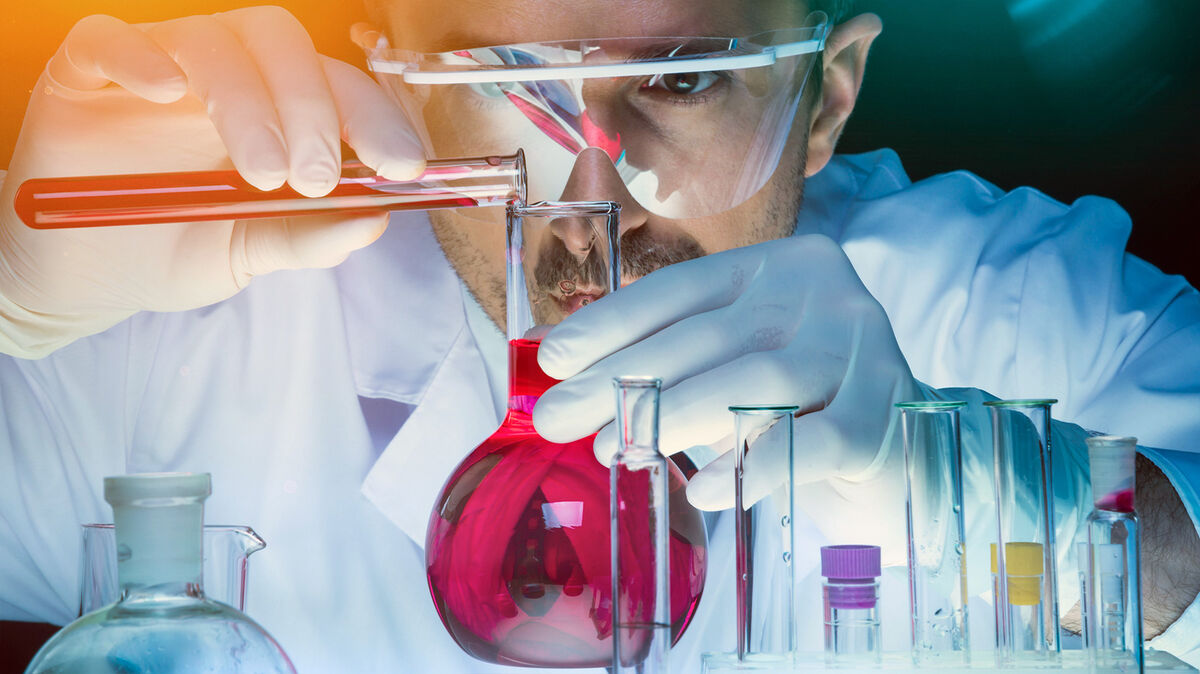
Sometimes chemicals need a little encouragement in order to react. The term “catalyst” indicates the substance that begins, speeds up or facilitates a chemical reaction. It sounds like you’d only find catalysts in a chemistry lab, but you may be surprised to find examples of catalysts in your everyday life! Keep reading to find out what a catalyst is and see examples of chemical catalysts as well as examples of catalysts in non-chemical contexts.
Chemical Catalyst Examples
A chemical catalyst is a substance that causes a chemical reaction to happen in a different way than it would happen without that catalyst. For example, a catalyst could cause a reaction between reactants to happen at a faster rate or at a lower temperature than would be possible without the catalyst. There are two main types of catalysts: inorganic catalysts and organic catalysts.
Examples of Inorganic Catalysts
Inorganic catalysts are compounds not found in biological processes. They include elemental metals and other inorganic substances. These catalysts speed up chemical reactions but do not change their structure in the process. Examples of inorganic catalysts in chemical reactions include:
- potassium permanganate - Hydrogen peroxide will decompose into water and oxygen gas. Two molecules of hydrogen peroxide will produce two molecules of water and one molecule of oxygen. A catalyst of potassium permanganate can be used to speed up this process. Adding potassium permanganate to the hydrogen peroxide will cause a reaction that produces a lot of heat, and water vapor will shoot out.
- platinum - The catalytic converter in a car contains platinum, which serves as a catalyst to change carbon monoxide, which is toxic, into carbon dioxide.
- palladium - If you light a match in a room with hydrogen gas and oxygen gas, there will be an explosion and most of the hydrogen and oxygen will combine to create water molecules.
- iron - When making ammonia, iron is a helpful catalyst. This reaction, known as the Haber process, converts nitrogen and hydrogen into ammonia. Iron accelerates the breaking of nitrogen bonds to make it more reactive.
- vanadium oxide - Sulfuric acid requires sulfur dioxide to become sulfur trioxide. When you pass sulfur dioxide over vanadium oxide, it oxidizes – meaning it adds an oxygen molecule – the sulfur dioxide into sulfur trioxide.
Examples of Organic Catalysts
Organic catalysts are known as “organocatalysts.” They consist of nonmetal elements such as carbon, hydrogen and sulfur. Biocatalysts, such as proteins and enzymes, are another type of organic catalyst that are involved with biological chemical processes. Like inorganic catalysts, they still exist in their original form after the reaction is complete.
- proline - Proline is a naturally occurring amino acid that can also be biosynthesized. It acts as a catalyst in many biological processes, including the Aldol condensation, which creates carbon-carbon bonds for new organic compounds.
- diastase - When you eat something that includes starch, diastase enzymes are the catalysts for digestion. They appear in saliva and break the starch down into maltose for the body to digest in the stomach.
- lactase - Most people have lactase enzymes in their small intestine, which begin the chemical breakdown of lactose from milk and dairy products. People who are lactose intolerant don’t make enough of this enzyme and can’t completely digest dairy products.
- DNA polymerase - When DNA replicates, it must copy the genetic sequence perfectly. The enzyme DNA polymerase catalyzes the DNA synthesis every time a cell divides. It works with other enzymes, including helicase and primase, to fully copy DNA over and over.
- alkaline phosphatase (ALP) - Found in the liver, digestive system and bones, alkaline phosphatase is the catalyst for breaking down proteins. It also aids in reactions that involve digestion and bone growth. Too much alkaline phosphatase in the blood can indicate a problem with the liver or bones, or might just be from normal pregnancy and breastfeeding processes.
Non-Chemical Catalysts
When the term “catalyst” is used outside of chemistry, it refers to something that causes a social change or reaction to take place. This figurative definition is based on the definition of a chemical catalyst that starts a larger reaction. Some examples of figurative catalysts are:
- relationships - When Antonia introduces her two friends who then begin to date, she is the catalyst for their relationship.
- legal change - Susan’s family member is wrongfully imprisoned. She writes letters to her legislators, organizes protests and speaks to the media. Soon her family member is freed and the laws are changed to prevent someone else from being wrongfully imprisoned. Susan was the catalyst for change.
- sports - Ella sits on the bench during her basketball game. The starting players are getting tired and falling behind in points. Ella’s coach puts her into the game. Her energy helps her score several baskets, and the team wins. Ella was the catalyst for winning the game.
- social change - Barry and his friends see a younger kid getting bullied. They stand up for the kid and start an anti-bullying group that looks out for bully problems on the playground. Soon, there is much less bullying at their school, making them the catalyst for change.
Catalysts All Around Us
These examples of catalysts show how one action or one person, both in chemistry and in life, can be the beginning of a larger change. It’s important to remember that the catalyst only starts the reaction, and that more reactants are necessary for true change. Take a look at these everyday examples of chemical reactions for more ways that chemistry affects your daily life.